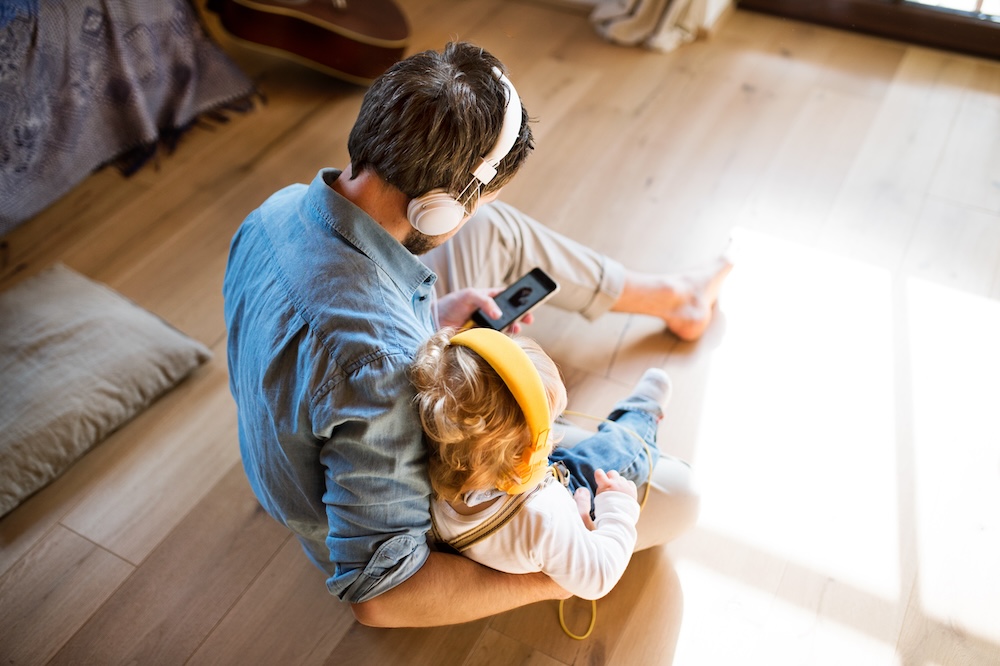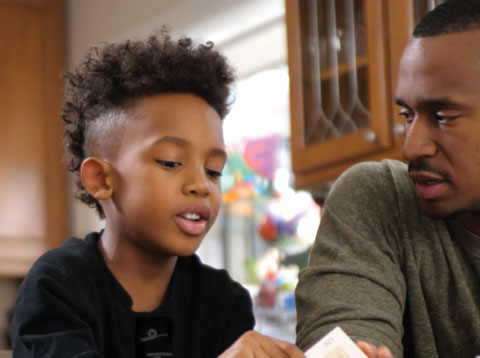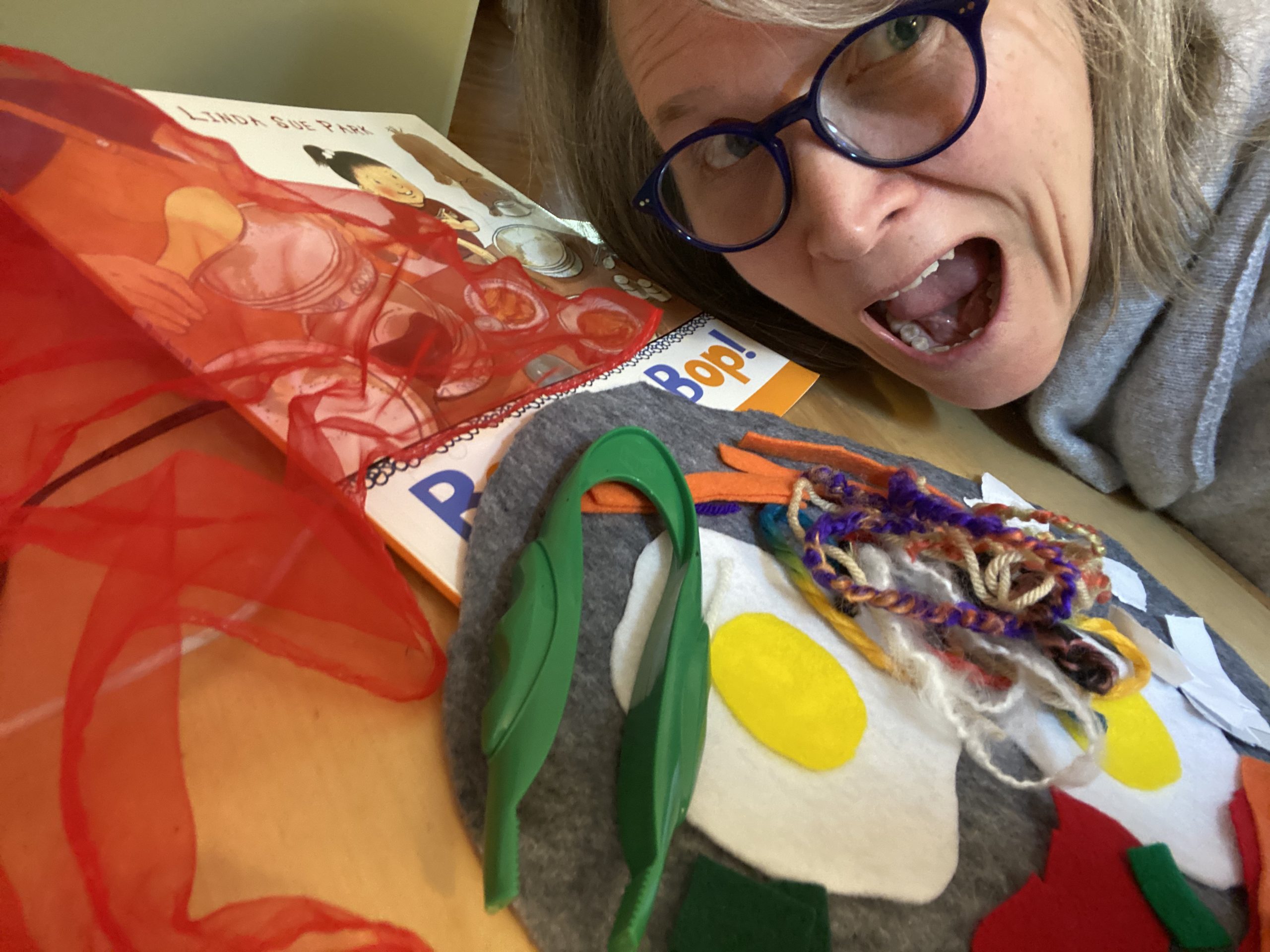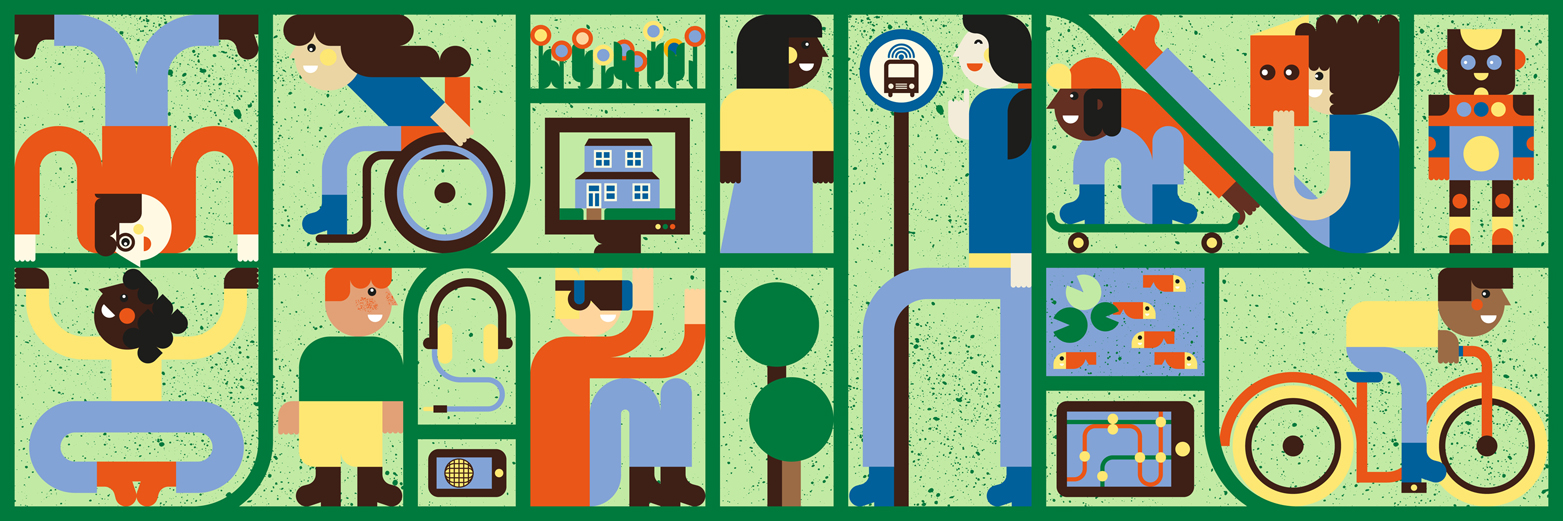Youth Services Librarian Claudia Haines recently hosted a family screening of the new PBS Kids show Molly of Denali at Homer Public Library in Homer, Alaska. This post from her blog is republished here with permission.
I’m always looking for media, in all formats, that authentically reflects Alaskan families’ experiences. Today, a new show produced by WGBH in Boston for PBS Kids does that and more. I’m excited about the show, and the advanced screening we offered at the library earlier this summer was a great learning experience. Here’s why:
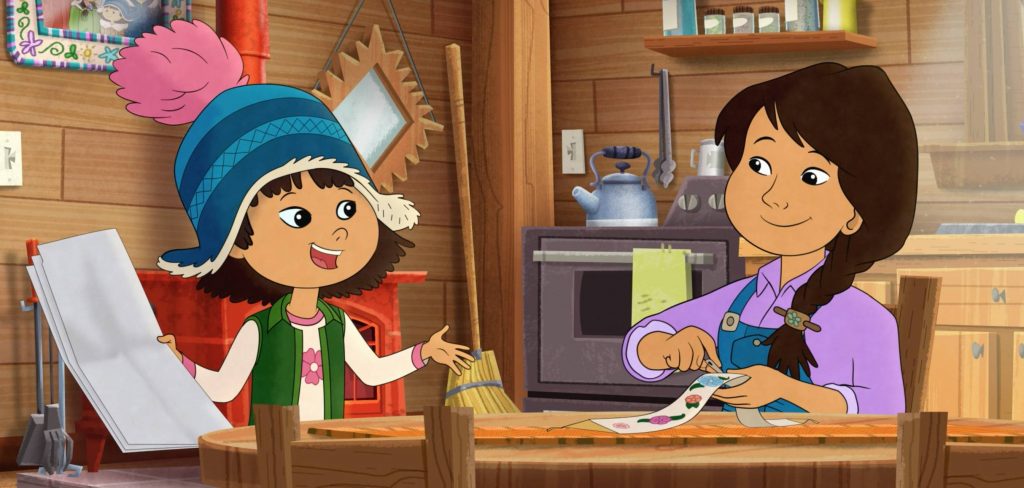
The show
Molly of Denali, like other PBS Kids shows for young children, is an entertaining animated show that supports early learning; in this case the idea of informational text. The producers define informational text as “any text created for the main purpose of providing information. Informational text can be created using written words, oral language, visuals, or a combination of these forms.” (PBS Kids) Examples include recipes, signs, maps, websites, text messages, podcasts, songs and more. Informational text is all around us and provides another entry point for supporting early literacy, but it is rarely given so much attention in early childhood entertainment.
The show also aims to address cultural representation, and it does this well. The story, ways of knowing, and setting details are authentic. Each episode also features a live action piece featuring Alaskan kids sharing about, well, Alaskan life. How does a producer in Boston get that right? She had help. From the script writers, voice actors, and song writers to the cultural advisors, Alaska Natives were involved in the production and the result is what I dreamed of when I was working on the Diverse and Inclusive Checklist with KIDMAP. (Watch out, Pamyua‘s theme song is catchy and you’ll be singing it all day long!) The show is silly, entertaining, enriching, and even serious at times.
Listen to a story about the making of Molly of Denali on Alaska Public Media here.
The Event
While Molly of Denali is set in a fictional town, Qyah, kids from all over rural Alaska can see themselves reflected in the show. But no, this isn’t just a show just for Alaskan kids. (Let’s face it, that would not be an easy sell for a producer.) Kids from elsewhere can relate too! Families will connect with the characters and learn much about what it is like to be a kid in rural Alaska. Molly Mabray is a young Athabaskan who is adventurous, strong, curious, and kind. What a great role model for all kids!
We were excited to be one of several Alaskan communities to host an advanced screening of the show. We wanted to bring families together at the library to celebrate what the show and its creators had accomplished. It was also a great media mentorship opportunity. I knew we could model how to practice Joint Media Engagement, or Co-viewing, while watching a tv show together, introduce tips on evaluating media and talk about how quality tv can support early learning.
I started the afternoon family event by quoting from Dr. Rudine Sims Bishop’s piece “Mirrors, Windows and Sliding Glass Doors”, introducing many grownups to her name, words, and ideas. I have wanted to do this for a long time and Molly of Denali offered great examples of all three for families in my community. It also gave use a foundation for talking about the show during the event (in between the two episodes we watched). Dr. Bishop’s idea is not strictly a book-related concept, but applies to all media and we can use it to evaluate media in the library and at home.
I then introduced the show and some of the characters, talked about what informational text is and why it is important to talk about, and shared some of the backstory and why it is a landmark creation. The intro was not too long, just several minutes, but planted a seed that got grown-ups thinking. The questions I got after the program, about recommendations, the show’s creators, when the show would air, etc. were evidence.
We showed two episodes (animated portions only), with a short conversation and popcorn break in between. During the between-episodes chat, I asked the audience questions like “What did you recognize in that episode?” (high tunnels for growing food, mountains, trees dirt roads, traditions, rivers, the library, the kids and more), “What is different about Homer (where we live) and Molly’s community of Qyah?” (no ocean, no boats, the language, the stores) and “How did Molly and her friends learn about canoeing?” (YouTube, the coach, practice) Many kids enthusiastically chimed in with their observations.
Afterwards, I mentioned that families who enjoy podcasts might like to add Molly of Denali to their listening list. Several families asked me how to access to podcast episodes and if I could recommend others. Alaska is big and casual road trips are long. Podcasts are a perfect fit for the Alaskan family!
About 65 people showed up for the program held in our children’s library. After the screening families stayed in the library to chat with each other, do some of the activity sheets connected to the show and look for books. (I made sure a display of Alaskan picture books was prominent.) The event was simple, but meaningful.
I hope you enjoy the show!
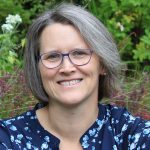 Claudia Haines leads storytimes, hosts Maker programs, and gets great media into the hands of kids and teens as the Youth Services Librarian and Media Mentor at the Homer Public Library (Alaska). She is a co-author of the Association for Library Service to Children’s white paper, Media Mentorship in Libraries Serving Youth (2015). She trains other librarians as media mentors and serves on both local and national committees that support families and literacy. She blogs at www.nevershushed.com. @claudiahaines
Claudia Haines leads storytimes, hosts Maker programs, and gets great media into the hands of kids and teens as the Youth Services Librarian and Media Mentor at the Homer Public Library (Alaska). She is a co-author of the Association for Library Service to Children’s white paper, Media Mentorship in Libraries Serving Youth (2015). She trains other librarians as media mentors and serves on both local and national committees that support families and literacy. She blogs at www.nevershushed.com. @claudiahaines
